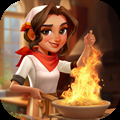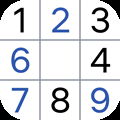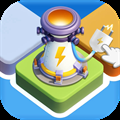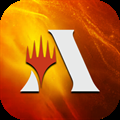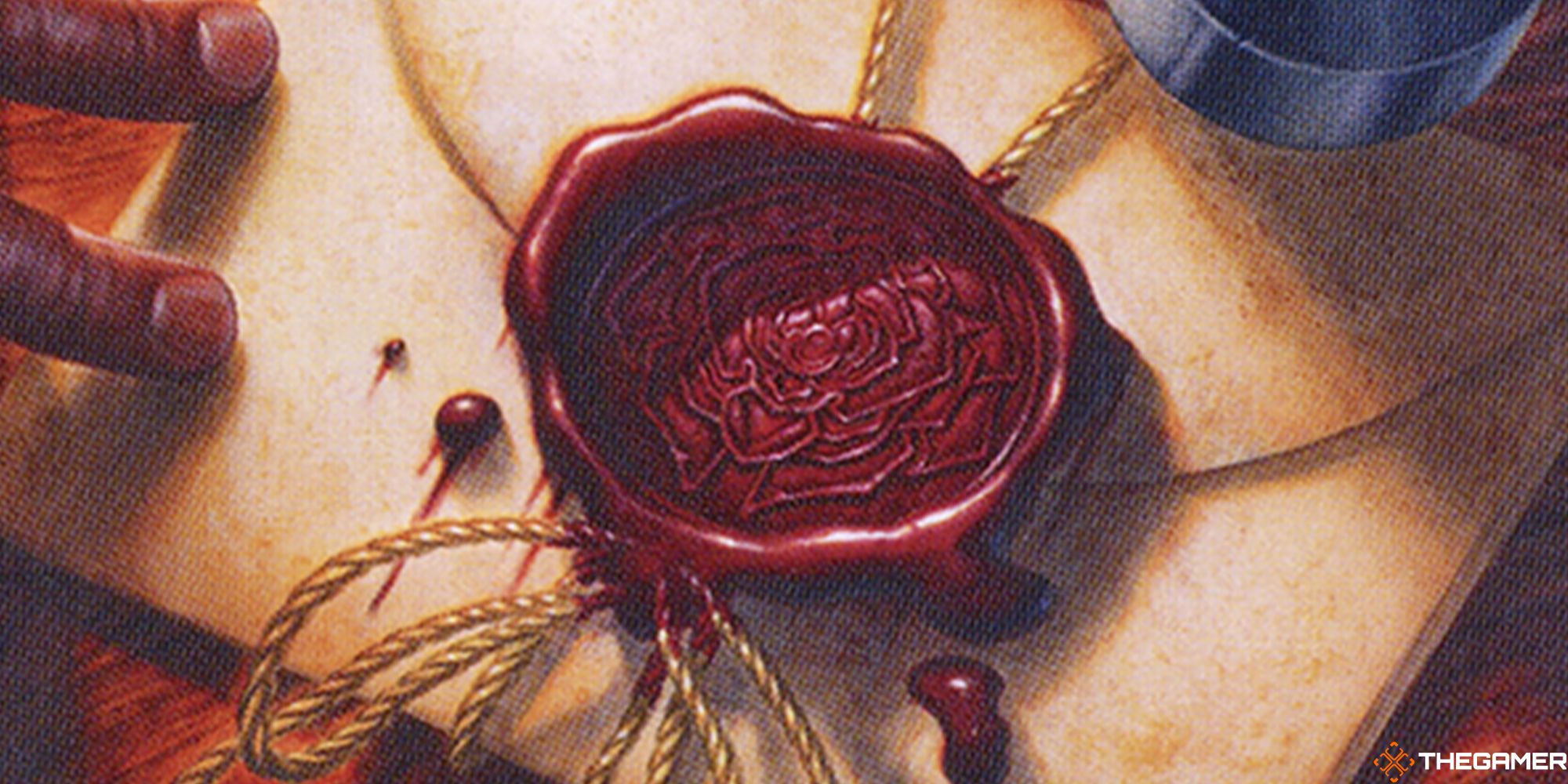
Quick Links
- What Is Sealed
- Rules
- The BREAD Acronym
- Determine Your Colours
- Mana Curve
- Deck Goals
Magic: The Gathering is an incredibly popular trading card game with many formats. Some formats, like Modern and Vintage, can be challenging to get into, as many of the best decks require you to put lots of expensive cards into them, and if you decide to go for a cheaper deck you may be at a disadvantage.
Related: Magic: The Gathering - Everything We Know About The Doctor Who Commander Decks
This is where formats such as Draft and Sealed can become more enjoyable. The Sealed format gives all players an even playing field when they enter, whilst still being competitive and rewarding good luck and solid deckbuilding skills. It also allows for a cheaper way to playing the game.
What Is Sealed
Sealed is a format where you are given six booster packs, and will need to create a 40-card deck with them which you will then use in matches against other player's sealed decks.
Keep in mind that the format rules can slightly vary depending on where you are playing, which set you're playing, and even which store you're at, as some will modify their rules to their own community's needs.
If you're playing in a store, basic lands will usually be provided for you. Otherwise, you'll need to have a good collection of basic lands, as you won't be provided enough of them in the packs themselves.
Sealed will often be played for new sets at prerelease events. These are great ways of opening some packs, where you get to keep the cards, and where you have the opportunity to test out some of the new cards in a less competitive environment than Standard or Modern.
Rules
Zurgo and Ojutai by DaarkenThe rules are pretty simple when it comes to Sealed, which is what makes it such a good format for new players.
As mentioned, you are making a deck with a minimum of 40 cards, but unlike the similar format, Draft, you do not have to worry about picking the wrong cards and making a bad deck.
If you open your six boosters and build a deck, and then play one game and realise it's awful, you are able to go back to the drawing board and create a new deck using your other cards that you have pulled. This is because all the cards you don't use are added to your sideboard, which you are able to switch out whenever you want.
You could even switch your decks around in between a best of three against an opponent to really throw them off.
Also, unlike most other formats, you are allowed as many of one card as you want. So, instead of being restricted to just four of one card, if you manage to open five copies of a card you like, you are more than welcome to put them all in there.
The BREAD Acronym
Thalia and The Gitrog Monster by Howard LyonBREAD is an acronym for a helpful guide for building your limited deck. While many argue BREAD has fallen out of favour as Magic's design has evolved, it is still a good foundation when it comes to picking out your cards.
Bombs and Removal
For the B and R in BREAD, we have your bombs and removal cards, which act as the cards you want to pay the most attention to.
Bombs are your powerful rares or any mythic rares that you might have pulled from your six boosters. This is where the luck aspect comes into the sealed format, as one day you might get a planeswalker, and the next all your rares are awful.
Either way, as you're opening up your boosters, make a note or put in a separate pile all your good rares and all of your removal cards, as these will be the cards that will influence what deck you play the most.
Of course, removal is any card that can take your opponent's threats out of play. Whether that's through destroying it, making it be sacrificed, countering the spell, or bouncing it back to your opponent's hand, anything that can throw a spanner in the works should be considered removal.
Evasion and Aggro
For the E and A in BREAD, we have evasion and aggro
Evasion cards will be able to get through your opponent's defences. These are cards with abilities like flying, that go over the enemy creatures, or cards with trample that go through the enemy creatures.
It is important to add evasion cards to your deck as an effective way to outpace and out-tempo your opponent, whilst getting to your bigger bomb cards.
Some more types of evasion cards include; spells that can't be countered, cards with Indestructible, cards with protection from colours, and cards with hexproof.
Aggro cards can be played aggressively. They are often low mana costing and can quickly wear down the enemy and their creatures.
Duds
Duds are the final part of BREAD, they are the cards that are not worth playing. Cards with mana cost too high for what the card does, or cards that don't have value.
When building your deck you can organise all your cards by colour, have a separate pile for your bombs, and create another pile off to the side for your duds. This way you have a really good idea of what colours you are strong in and can help influence the deck you play.
Determine Your Colours
Now that you are familiar with all of your cards, it should start becoming clearer as to what two or three colours you will be playing.
You will want to consider the colours where you have a lot of cards that are good. These will often be your uncommon cards and some select commons.
It is unlikely that you will be able to use all of your powerful cards, as it isn't advised to make a five-coloured sealed deck. Usually, two-coloured decks are the most reliable.
Overall, your main influence will be your bombs. Work out which of your cards are the best and try and build a deck around them, taking into consideration any of their abilities if they are a creature, or how you can get maximum value from them if the card is a spell.
Mana Curve
Recruitment Officer by Johan GrenierAs you are building your deck, a good base rule to go by is having 16 to 18 lands and then 22 to 24 spells. This way you have an optimal chance of drawing the right amount of land so that you don't get flooded, whilst having plenty of your spells to actually play the game with.
Mana Value
0-1
2
3
4
5
6+
Average Amount of Cards
2
7
6
4
3
1
When building your deck, you need to be selective about the cards that make the final cut. Whilst you may have a lot of powerful six-to-eight drops, you don't want to fill your deck with them as, otherwise, you won't have anything to play leading up to them.
If you were to get all the cards in your deck and arrange them by their mana cost, you would want it to look like a bell curve, where you have a few early drops and a few late drops, with most of your cards being three-to-four drops.
This way, you are able to stay on tempo against your opponent and every turn you have a threat or response to something they have done. You will quickly find that decks that can't keep tempo with their opponent will lose a lot of matches as they will not be able to take control of the battlefield.
Deck Goals
Plaza of Heroes by Gabor SzikszaiWith your sealed deck now built, you will hopefully still have a little bit of time before you start playing matches against other opponents.
During this time, play a couple of games yourself. Just shuffle your deck and draw seven cards and play out the first few turns so you can get a feel of how the deck may play.
In terms of how the deck will play, you will want to understand what your deck's win condition is.
Sometimes a win condition is as simple as getting your bomb onto the battlefield and keeping it alive. If this is the case, you can lean more into cards that draw you more cards and other spells that keep your powerhouse alive.
Other common win conditions are playing a control deck that runs a lot of counter and removal spells that keep the battlefield under your control, as you slowly whittle down the opponent's health. There are also combo decks that aim to build up into one explosive turn that deals massive damage all at once.
Sometimes just having a deck that plays consistently good cards will be enough. Cards that have high synergy with each other, and spells that improve your creatures, can give you the edge you need to come out on top in a match.
Next: Magic The Gathering: How To Draft




